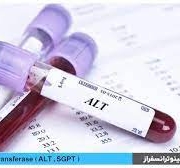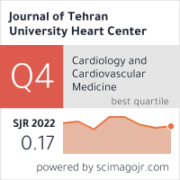Upper Normal Limit of Serum Alanine Aminotransferase and Its Association with Metabolic Risk Factors in Pars Cohort Study
Abstract
BACKGROUND The range of serum alanine aminotransferase (ALT) varies in different sub-populations or countries. Its population-specific cut-off points may provide a more effective screening tool for non-alcoholic fatty liver disease (NAFLD). Objectives To investigate the upper normal level (UNL) of ALT and its association with metabolic syndrome (MS) in a semi-urban population in southern Iran. METHODS The baseline data of Pars Cohort Study was used. A total of 9264 subjects aged 40-75 years were enrolled. UNL of ALT was estimated based on 95 percentile of ALT in participants who had body mass index (BMI) < 25. Multivariable logistic regression was applied and adjusted odds ratio (OR) and its 95% confidence interval (CI) were estimated. RESULTS 95 percentile of ALT was 41.71 U/L and 32.9 U/L in men and women, respectively. Abnormal waist circumference (OR: 1.72, 95%CI: 1.34, 2.21), triglyceride (OR: 1.63, 95%CI: 1.25, 2.13), fasting blood sugar (OR: 1.69, 95%CI: 1.32, 2.16), cholesterol level (OR: 1.06, 95%CI: 1.03, 1.09) and systolic blood pressure (OR: 1.08, 95%CI: 1.01, 1.16) were independently associated with ALT. CONCLUSION UNL of ALT in southern Iranian women is lower than the current recommended level, while these are almost the same for men. MS components are highly common in southern Iran and are associated with elevated serum ALT. Further studies are recommended to estimate the UNL of serum ALT among the Iranian population with NAFLD.





